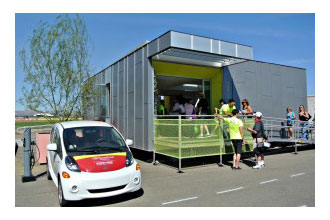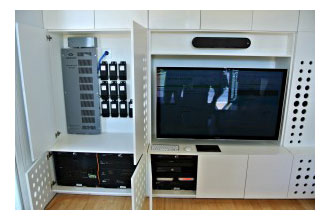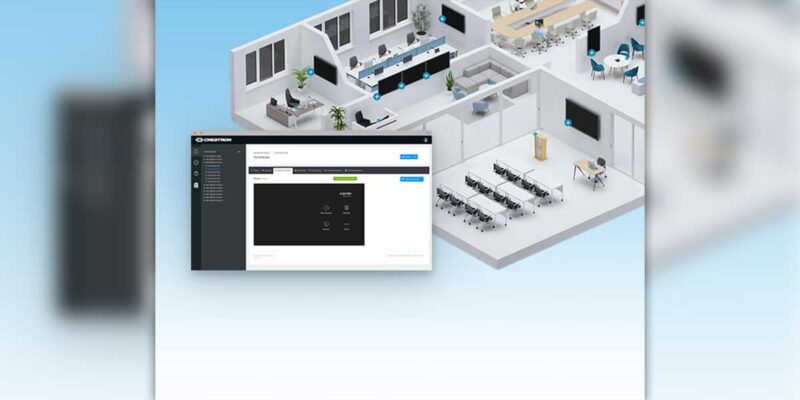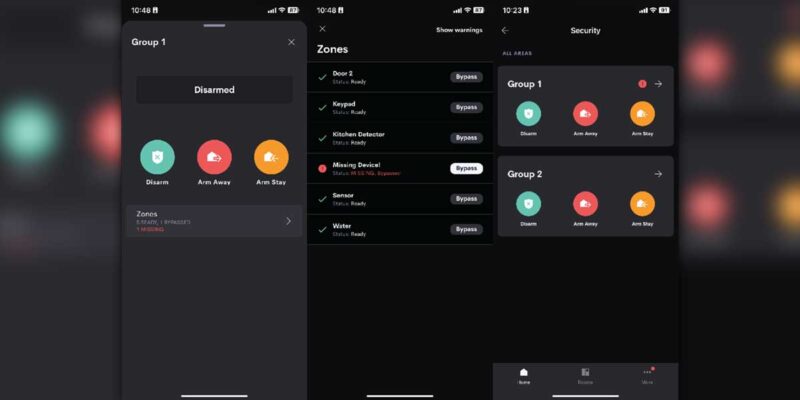Chance to Work With USC Architecture Students in Solar Decathalon, Priceless for Students and Sponsors
By Cheryl Goldin
Waveguide Consulting
 It’s not every day you get a chance to work hands-on with architecture students, to give them exposure to the business of building technology, but Waveguide, Spinitar and Crestron had that opportunity as sponsors of USC’s fluxHome team competing in the U.S. Department of Energy’s biennial Solar Decathlon.
It’s not every day you get a chance to work hands-on with architecture students, to give them exposure to the business of building technology, but Waveguide, Spinitar and Crestron had that opportunity as sponsors of USC’s fluxHome team competing in the U.S. Department of Energy’s biennial Solar Decathlon.
“We started off with lofty ideas that sounded good in theory,” said Justin Kang, a USC student on the team. “After almost two years of planning, fundraising, designing and building our house, it came down to the reality of deadlines and massive coordination between the team, suppliers and consultants.”
Team USC is one of 19 collegiate teams competing in the U.S. The public is enjoying the fruits of their two-year effort with the projects on display through October 13 at the Orange County Great Park in Irvine, California.
USC’s fluxHome combines off-the-shelf, mass customizable components with smart home technology, which is where the sponsors played a role.
“USC is a valued client or ours. And as consultants with a keen interest in sustainability across our company and in our designs, it was a natural fit when we were asked to support the project,” said David Gales, principal with Waveguide, which worked many hours with the students as advisors providing recommendations and reality checks. “We learned from the students as much as they learned from us. And we had great partners. Spinitar went above and beyond to build and install the technology systems. Crestron donated a control system that serves as the brains for the home’s energy management and control. And the low voltage systems group at Rosendin Electric provided the software programming that tied it all together.”
“We welcomed the opportunity to participate in the audiovisual and home automation integration of the fluxHome,” said Jared Lederhandler, CTS, Spinitar’s Business Development and Service Sales Manager. “The students were professional, organized and quick to pick up concepts and apply them. Their knowledge and skills shined through each stage of the project.”
How Technology Changes Behavior to Save Energy
The Crestron system monitors the solar array, measures energy consumption, and operates the home entertainment system, window shades and lighting.
Crestron control systems can drastically reduce the energy usage in a home, an estimated 10-15% savings using control systems and sensors. With a combination of user control, and scheduled events for time of day, occupancy and weather, homeowners are able to make smart decisions regarding setting lighting levels, HVAC set points and shade positions both manually and automatically.
“But what is exciting about how the USC team has designed the system is that even more savings can be achieved through visibility into how the home is working and how energy is being utilized or saved,” said Antonio Dias, Crestron Regional Manager. “By using the information gathered through current power usage monitoring and sensing and displaying this – in simple to understand and easy to view graphic displays – the homeowner will be able to see in real-time how their interactions with the space impact energy consumption.”
 Using keypads, dimmers and touch screens throughout the home, owners will see immediately the effects of their behavior. With time of day and astronomical time clock events pre-programmed in, homeowners of the fluxHome will be able to track and see historical data on how these event settings also reduce energy.
Using keypads, dimmers and touch screens throughout the home, owners will see immediately the effects of their behavior. With time of day and astronomical time clock events pre-programmed in, homeowners of the fluxHome will be able to track and see historical data on how these event settings also reduce energy.
The list of energy-efficient architectural features is long and includes a solar chimney with a retractable skylight, natural daylighting and energy-efficient LED lighting fixtures throughout the house. A Crestron smart home automation system regulates lights, temperature, humidity, energy usage and security. The simple user interface can show in dollars and cents what each device costs homeowners to use, promoting smart decisions, and occupancy sensors know when a space is empty and turns off all non-essential devices.
Why the Solar Decathlon
The competition pushes future architects and engineers to imagine, design and build houses that optimize energy production and maximize efficiency. The students are challenged to place demands on the buildings’ energy systems to maintain the house within a certain temperature range, to provide lighting, to run appliances and much more – in the environment where they are built. The houses generate energy with photovoltaic (solar electric) systems that produce electricity and with solar thermal systems for space heating and cooling and water heating.
What Happens to the Homes?
It’s expected that USC’s house will become a home for some lucky family in Southern California. Some of the houses are sold to recover costs or raise money for future teams, while others are used for research and are on display for public tours at their respective universities.
To learn more:
solardecathlon.usc.edu
solardecathlon.gov
waveguide.com
spinitar.com
crestron.com





